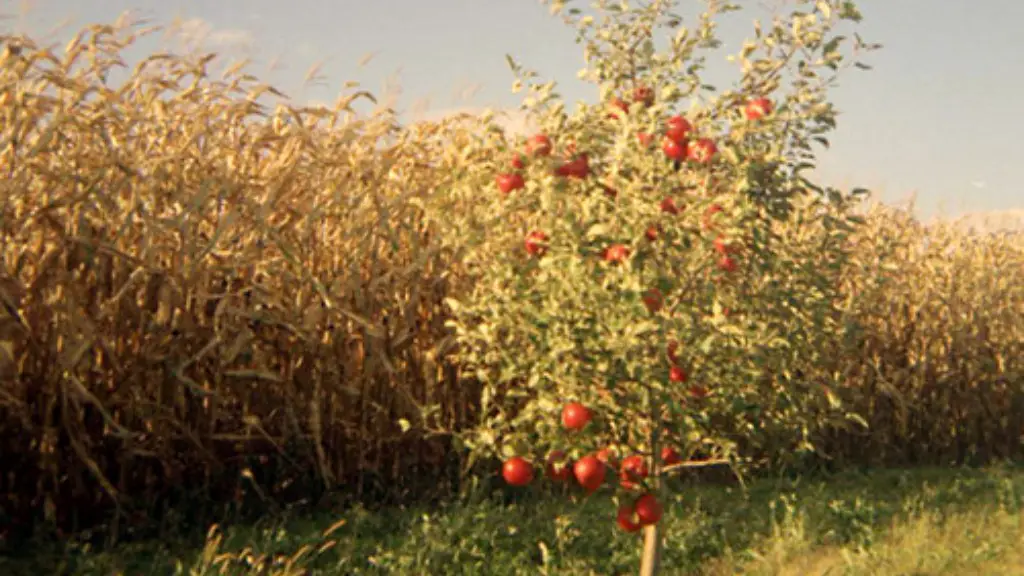It’s a common phenomenon for lemons to split on the tree. Some lemons might even split open on the branch before being harvested. It’s important to understand why this happens so that lemon growers can take the necessary steps to minimize splitting and maximize the amount of usable fruit from each tree.
One of the primary causes of lemon splitting is extreme temperatures. Lemons are a subtropical fruit and their skins are very sensitive to fluctuations in temperature. On hot days, the temperature difference between the tree and the air can cause the lemon skins to split.
On cooler days, however, the relative humidity in the air can cause the lemons to take in and retain more moisture than normal. This excess moisture can cause the lemons to swell and split. It’s also possible that other environmental factors such as strong winds can cause lemons to split on the tree.
Lemons that aren’t harvested quickly enough can also be prone to splitting on the tree. As the lemons mature, they contain more fluid. Since the lemon skin can’t expand to contain it, pressure builds up and the lemon can burst open.
This is why it’s important for lemon farmers to have systems in place to quickly identify and harvest ripe lemons. This will help to minimize the amount of split fruit on the trees and maximize the amount of usable fruit.
Finally, another common cause of lemon splitting on the tree is disease or pest infestation. Diseases such as foot rot and scab can cause the lemon skins to become weak and split open. Similarly, pests such as insects or birds can peck away at the skin and cause it to rupture.
Prevention of Lemon Splitting
The best way to prevent lemons from splitting on the tree is to monitor the environment and adjust it as needed. This means controlling the temperature, humidity, and overall conditions in the field. It’s also important to ensure that the trees are in good health, free from diseases or pest infestations.
Regular pruning and thinning can help to keep the trees healthy and reduce the chances of splitting. Proper irrigation is also important in limiting the amount of split fruit. Too much or too little water can cause the lemons to swell and burst open.
Finally, it’s important to harvest the lemons as soon as they’re ripe. This will ensure that they don’t swell up and split on the tree. It’s also important to gently handle the lemons to avoid any bruising or damage to the skin.
Benefits of Lemon Splitting
Although lemon splitting can be a nuisance for farmers, there are some benefits to this phenomenon. For one, split lemons are usually sweeter because they contain more natural sugar than whole lemons. This sweetness can be used to make delicious lemon-based desserts.
Split lemons are also easier to juice. This makes it easier to extract the valuable juice and pulp from the fruit. This is of particular importance to commercial lemon juice and concentrate manufacturers.
Finally, split lemons are softened by the increased exposure to the elements. This makes them easier to cook or bake with and can give dishes an enhanced flavor. Split lemons can also be used in preserves or pickles for added complexity of taste.
Facts about Lemon Splitting
There are some interesting facts about lemon splitting that can help lemon farmers better understand and manage the phenomenon. For instance, certain varieties of citrus fruit are more prone to splitting than others. It’s important to select varieties that are tolerant to splitting.
The skin of a lemon can also split due to the force of gravity. If a tree is top heavy and overloaded with lemons, the additional weight can cause the lemons nearer the ground to split open.
It’s also worth noting that lemon splitting is a natural process and, in some cases, can be beneficial to the farmer. Split lemons can be sweeter and easier to juice, as discussed earlier.
Impact of Lemon Splitting
Lemon splitting can have a negative impact on farmers, as it reduces the amount of usable fruit from each tree. This can significantly reduce their profits, especially in the case of commercial lemon growers. It’s important for them to understand the causes of splitting and take the necessary steps to reduce the risk.
Split lemons can also be unappealing to consumers, as they can be overly soft and have an odd texture. This can make them unpopular for use in desserts or for juicing. As such, lemon splitting could reduce the overall demand for lemons.
Finally, lemon splitting can reduce the shelf life of the fruit. As the lemon skin is highly susceptible to disease or infestation, lemons that have already split will have a decreased shelf life.
Conclusion
In conclusion, while lemon splitting is a common phenomenon, it’s important for lemon farmers to understand why it occurs. Extreme temperatures, humidity, and overripe fruit are some of the primary culprits. The best way to reduce the risk of splitting is to monitor and adjust the environment, harvest lemons quickly, and maintain healthy trees. Lemon splitting can also be beneficial in some contexts, with split lemons being sweeter and easier to juice. However, it can reduce the amount of usable fruit and have a negative impact on farmers and consumers.


